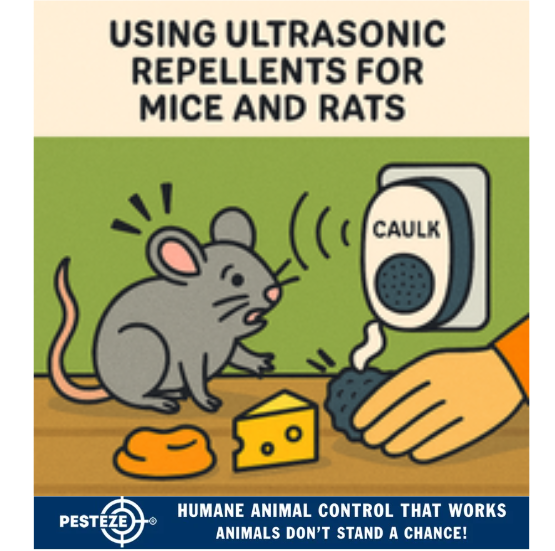USING ULTRASONIC REPELLENTS FOR MICE AND RATS

USING ULTRASONIC REPELLENTS FOR MICE AND RATS
SUMMARY
Ultrasonic repellents offer a modern, chemical-free solution to rodent problems. These devices emit high-frequency sound waves that are intolerable to mice and rats but inaudible to humans and most pets. This guide explores how ultrasonic repellents work, where to place them, and how to maximize their effectiveness. Ideal for homes, offices, and storage areas, ultrasonic technology provides a humane and maintenance-free way to deter rodents without traps or poisons.
FEATURES
-
How Ultrasonic Devices Work: Understand the science behind high-frequency sound deterrents.
-
Ideal Placement Locations: Learn where to position devices for maximum rodent disruption.
-
Pet and Human Safety: Discover why ultrasonic repellents are safe for most households.
-
Limitations and Expectations: Know what ultrasonic technology can and cannot achieve.
-
Combining with Other Methods: Enhance effectiveness by pairing with sealing and sanitation.
-
Maintenance and Longevity: Tips for keeping devices functional and effective over time.
GUIDE DESCRIPTION
Ultrasonic repellents are increasingly popular for homeowners seeking a non-toxic, hands-off approach to rodent control. These devices emit sound waves above the range of human hearing—typically between 30 and 55 kHz—that disrupt the auditory and nervous systems of mice and rats, making the environment uncomfortable and encouraging them to leave.
To use ultrasonic repellents effectively, placement is key. Position devices in areas where rodent activity is suspected—such as kitchens, basements, attics, and garages. Sound waves do not penetrate walls or furniture, so open, unobstructed spaces yield the best results. Multiple units may be needed for larger or multi-room areas.
Ultrasonic repellents are safe for humans and most pets, including dogs and cats. However, small mammals like hamsters or guinea pigs may be affected, so avoid placing devices near their enclosures. These repellents are silent to humans, odor-free, and require minimal maintenance—usually just occasional cleaning and checking for power supply.
While ultrasonic devices can be effective, they work best as part of a broader rodent control strategy. Seal entry points, eliminate food sources, and maintain cleanliness to prevent rodents from returning. Results may take several days to weeks, depending on the severity of the infestation.
Keep in mind that ultrasonic repellents may not work on all rodents or in heavily infested areas. In such cases, combining them with traps or professional pest control may be necessary. Regularly inspect and reposition devices to maintain coverage and effectiveness.
By integrating ultrasonic repellents into your rodent prevention plan, you’ll enjoy a safer, cleaner home without relying on harmful chemicals or messy traps. It’s a smart, humane step toward long-term rodent control.
- Amy Chang


Comments 0